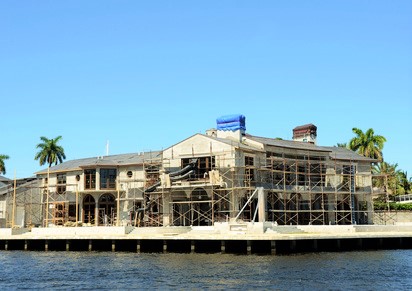An HBW review of new residential construction permit data added to the HBW database during the first quarter of 2019

Since the start of this year, new residential construction has been on the rise in the Sunshine State. Throughout Florida, housing starts have experienced a year-over-year increase of nearly 10.5 percent in the first quarter, resulting in approximately 19,570 new residential construction permits added to the HBW database. Out of the six major regions reviewed (Central, West, Southeast, Southwest, Northeast, Northwest), the highest concentration of new home construction could be found in West Florida where there were more than 4,405 new permits for the three-month period, and the greatest rate of growth in comparison to the first quarter of 2018 took place in Southeast Florida where new home construction is up by 27 percent.
Here is closer look at housing starts and leading areas in Florida from January to March 2019:
West Florida
As previously mentioned, West Florida ranked #1 for total new residential construction permits. Last month, there were more than 4,405 new permits added to the HBW database, reflecting a year-over-year increase of 23 percent in housing starts for the first quarter. The counties that have higher concentrations of housing starts and experienced growth in comparison to the first quarter of last year include: Hillsborough County (1,252 permits, +9 percent); Polk County (1,115 permits, +26 percent); Pasco County (981 permits, +40 percent).
Southwest Florida
Southwest Florida ranked #2 for total permits – During Q1-2019, there was a 23 percent increase in residential construction in comparison to the same time last year, resulting in more than 3,710 housing starts. All counties are currently ahead of last year’s figures when it comes to new permits on file with HBW, and the county with the highest concentration of housing starts was Lee (1,089 permits, +3 percent).
Central Florida
So far this year, new construction in Central Florida has not shown any major changes and is quite steady in comparison to 2018. In the first quarter of this year, the area has experienced a 1% year-over-year increase in housing starts, resulting in 3,307 new residential construction permits. More than 40 percent of all new construction took place in Orange County (1,352 permits), and the greatest rate of growth could be found in Lake County where starts were up 57 percent in comparison to last year.
Northeast Florida
New construction in the northeastern region of Florida is up by 4 percent in comparison to last year, resulting in 3,175 housing starts on file for Q1-2019. More than half of all new construction took place in the following counties: St. Johns County (1,085 permits, +11 percent); Duval County (825 permits, +2 percent).
Southeast Florida
While there are fewer total housing starts (2,703 permits) in the southeast in comparison to other Florida regions, the area’s residential construction is ahead of last year’s figures by nearly 27 percent. The counties that are experiencing growth and holding more than half of all new residential construction permits for the three-month period include: St. Lucie County (836 permits, +48 percent); Palm Beach County (639 permits, +49%).
Northwest Florida
Of all the Florida regions reviewed, the northeastern region is the only area that has experienced a dip in new construction; in comparison to Q1-2018, housing starts are down by 15 percent, resulting in approximately 2,266 new permits on file with HBW. The counties with the highest concentration of housing starts include: Santa Rosa County (350 permits, -12 percent); Walton County (310 permits, -13%); Escambia County (309 permits, -17%).
To gain more information on the builders, homeowners and permits for the construction activity above, check out HBW for your copy of the latest construction data reports. To gain access to the HBW database and receive custom and detailed reports on the latest residential and commercial building activity in Florida, Georgia, Texas, Alabama, and Oklahoma, please contact HBW for details.
